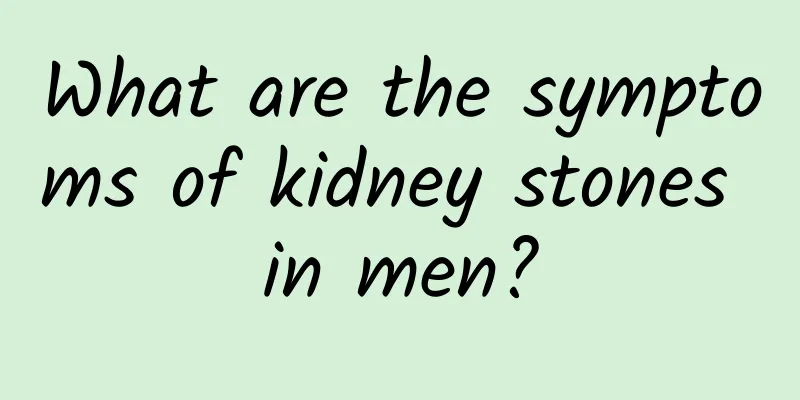What are the symptoms of kidney stones in men?

|
Everyone may be familiar with kidney stones, which are a very common disease. Many people may not know much about the symptoms of kidney stones. According to research, the symptoms of kidney stones include hematuria, pain, etc. Understanding these symptoms will help us detect the disease early, which is beneficial to the treatment of the disease and the recovery of the body. Let's take a look at the specific symptoms of kidney stones. 1. Frequent urination and painful urination. When stones are accompanied by infection, there may be symptoms such as frequent urination and painful urination. When acute pyelonephritis or nephrostomy occurs, there may be systemic symptoms such as fever, chills, and shivering. 2. Renal colic. When stones cause complete obstruction of the ureteropelvic junction or ureter, renal colic occurs. The pain is severe and unbearable, and is paroxysmal. The patient is restless, sweats, and has nausea and vomiting. The location and radiation range of pain vary depending on the location of stone obstruction. When the ureteropelvic junction or upper ureter is obstructed, the pain is located in the waist or upper abdomen, and radiates along the ureter to the testicle or labia and inner thigh on the same side. 3. Microscopic hematuria. When the middle section of the ureter is obstructed, the pain radiates to the middle and lower abdomen, and the right side is easily confused with acute appendicitis. The stone is located in the ureteral bladder wall section or the ureteral orifice, often accompanied by bladder irritation symptoms and radiating pain in the urethra and penis head. Depending on the degree of mucosal damage caused by the stone, it can manifest as macroscopic or microscopic hematuria. The latter is more common. Sometimes microscopic hematuria after activity is a clinical manifestation of upper urinary tract stones. 4. Hematuria and pain. The main symptoms of kidney stones are hematuria and pain related to movement. The degree of pain is related to factors such as the location, size, movement, and presence and degree of complications. The smaller the stone, the more obvious the symptoms. Large stones in the renal pelvis and renal calyx stones may have no obvious clinical symptoms, only hematuria under the microscope after movement. If the stone causes obstruction of the renal calyx neck, or the renal pelvis stone does not move much, it may cause dull pain in the upper abdomen or waist. 5. Anuria. Bilateral upper urinary tract stones can cause complete obstruction on both sides or complete obstruction on one kidney. Sometimes infection symptoms are manifestations of urinary tract stones. Especially for children with upper urinary tract stones, most of them manifest as urinary tract infection, which is worth noting. |
<<: What are the symptoms of male trichomonal vaginitis?
>>: What are the symptoms of scrotal eczema?
Recommend
What is the pain inside the glans?
What is the disease of glans pain? If some patien...
What causes urinary tract pain and itching in men?
There are always times when the human body's ...
What is the reason why men urinate frequently?
There are many reasons why men have frequent urin...
What causes spinal pain in men?
The spine is a very important bone for people. It...
Men blush in front of you
To love someone, you must first have feelings for...
What to do with seborrheic alopecia in men
In today's society, people have to work hard ...
How to replenish Qi and blood for men
Many men are often in a stressful environment, an...
Male bladder pain
The bladder is the area in our body where urine i...
5 tips for menopausal men to take care of their body and mind
We know that after men enter middle age, the male...
What are the dangers of ejaculatory duct obstruction?
Men with normal sexual function will ejaculate af...
How can men lose belly fat and waist fat?
The waist and abdomen are the parts of the body w...
How to make black chicken, yam and red dates soup, the benefits of eating black chicken for men
The three ingredients of black chicken, yam and r...
What exactly causes premature ejaculation?
Premature ejaculation is a disease that troubles ...
How to get pregnant if my husband has weak sperm
Among couples, if the husband has weak sperm, it ...
Men can control ejaculation
Today's fast-paced daily life has caused many...









